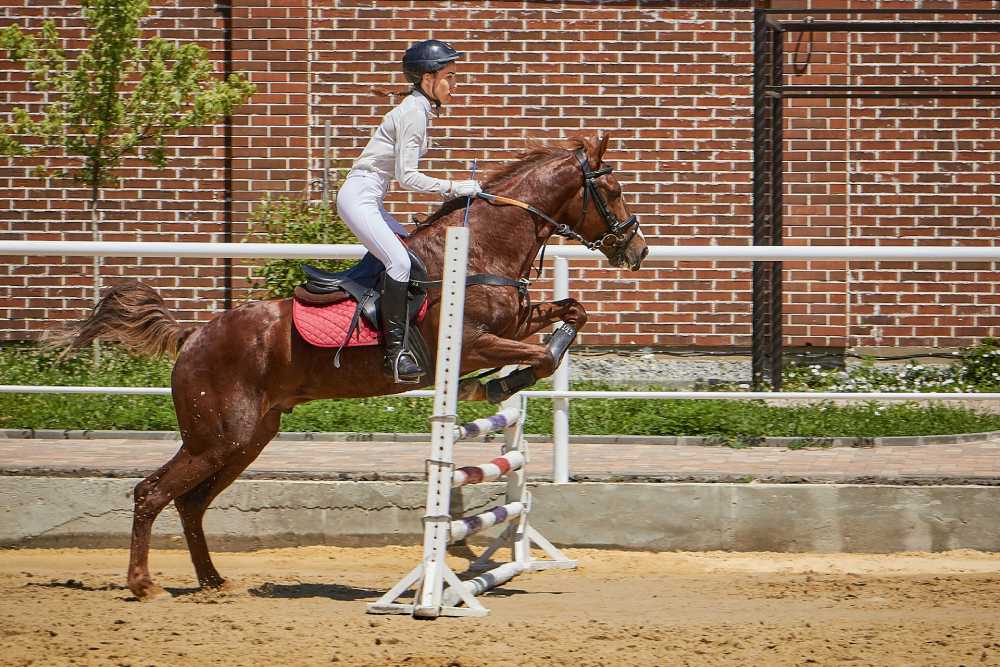
Show jumping success relies on rigorous training, which not only enhances skills but also strengthens the bond between the rider and horse. A structured routine, guided by experienced trainers, can significantly improve agility and accuracy.
Integrating tools like horse jumps into the routine can enhance agility and accuracy. Customizing training to the horse’s specific needs can lead to optimal performance, boosting confidence and trust. Proper warm-ups and cool-down exercises are essential to prevent injuries and ensure the horse’s well-being.
Choosing the Right Equipment
Selecting appropriate equipment is crucial for both safety and enhanced performance in show jumping. High-quality, durable gear can significantly impact your jumping experience. This includes everything from the saddle to the striped color horse jump, ensuring that each component complements your training regimen effectively.
Additionally, consulting with experts on the best types of equipment suited for your horse’s breed and size can lead to a more tailored and efficient training setup. Regularly updating and maintaining your equipment ensures longevity and peak performance. Purchasing top-notch tack is crucial since it has an immediate impact on both your control and the comfort of your horse when jumping.
Essential Safety Measures
Adhering to safety measures is vital for the well-being of both the rider and the horse. Regular inspection and maintenance of jumping equipment are paramount to prevent accidents. Wearing safety equipment, such as body protectors and helmets, also guarantees that you’ll be equipped to handle any unanticipated situations. Familiarizing yourself with basic first aid can be a lifesaver in emergencies.
Moreover, understanding your horse’s behavioral cues can prevent potential mishaps. Before engaging in any jumping exercises, ensure your horse is calm and focused. Addressing any signs of distress or discomfort immediately can avert accidents, maintaining a safer environment for both you and your horse. It’s also wise to have regular check-ups with a veterinarian to ensure your horse is in good health and capable of performing at its best.
Perfecting Your Technique
Mastering the art of show jumping involves continuously perfecting your technique. Minor adjustments in posture, balance, and timing can lead to significant improvements in performance. Paying attention to detail and practicing consistently are critical components in achieving perfection.
Observing professional show jumpers and mimicking their techniques can provide valuable insights. Recording your sessions and reviewing them can help identify areas for improvement. Constructive feedback from coaches or peers also plays a crucial role in refining your skills.
Embracing a growth mindset and being open to suggestions fosters continuous learning, enabling gradual but steady progression. Remember, every rider has room for improvement, and incremental enhancements can culminate in stellar performances over time.
Setting Goals and Training Schedule
It’s crucial to establish specific and attainable objectives to make progress. Create a well-rounded training timetable that encompasses various aspects of show jumping, ranging from fundamental exercises to more advanced jumps.
To make sure that each session has a distinct goal, divide your objectives into short-term and long-term goals. Staying motivated involves regularly assessing and modifying your objectives based on your progress.
Consistency is vital; adhere to your schedule, but also build in some flexibility to account for unexpected events. Keeping a training journal can offer valuable insights into what methods are most effective and where you can make improvements. Acknowledge small successes to maintain high spirits, both for yourself and your horse.
The Importance of Nutrition and Hydration
For both riders and horses to continue performing at their best, proper nutrition and hydration are crucial. A balanced diet with essential nutrients keeps both fit and energetic, preventing fatigue and maintaining concentration.
Consultation with a nutritionist or veterinarian is crucial for tailored diet plans. Both should include enough proteins, vitamins, and minerals for energy levels and muscle recovery. Proper hydration reduces the risk of cramps, dehydration, or heatstroke during intense activities.
Dealing with Competition Nerves
Anxiety before a competition can be managed through deep breathing exercises, mental rehearsal, meditation, visualization techniques, a pre-competition routine, and prior research and walkthroughs. These techniques help calm nerves, boost confidence, and maintain focus.
Visualization techniques can mentally prepare for the task ahead. A pre-competition routine, such as listening to calming music or light stretches, can also help. Being well-prepared and familiar with the competition course can also reduce unnecessary stress.
Staying Updated with Industry Trends
To stay ahead in the competitive world of show jumping, it’s vital to keep abreast of the latest trends and advancements. Attending industry events, subscribing to relevant newsletters, and engaging with the show-jumping community can provide valuable insights and tips.
Understanding new techniques and technologies can give you a significant edge. Participating in forums, webinars, and workshops can also broaden your knowledge and introduce you to novel ideas and practices.
Networking with other professionals in the industry can lead to collaborative opportunities and shared learning. Read up on the latest research and publications related to equestrian sports to continually enhance your theoretical knowledge and practical application.
